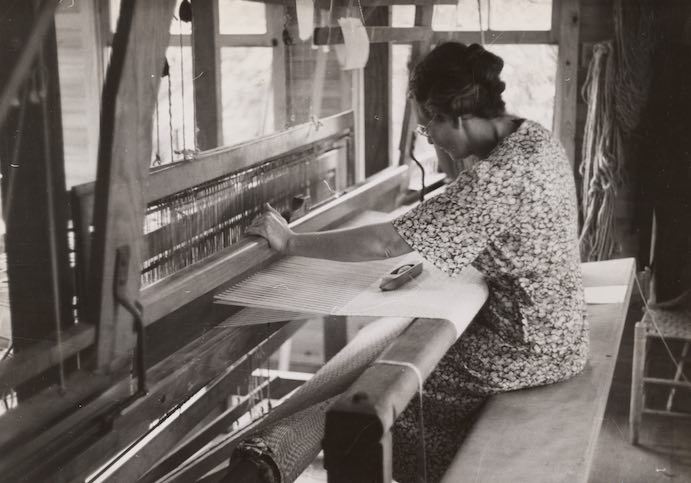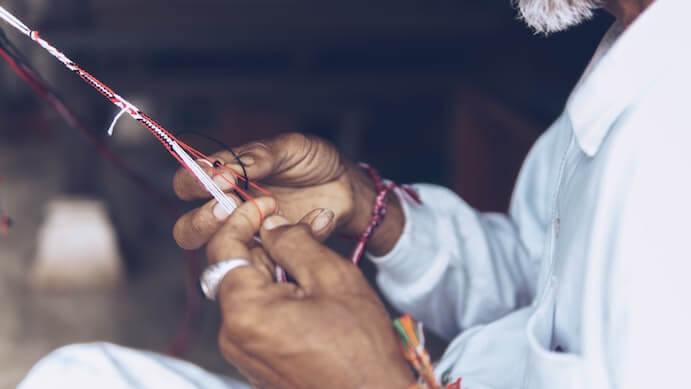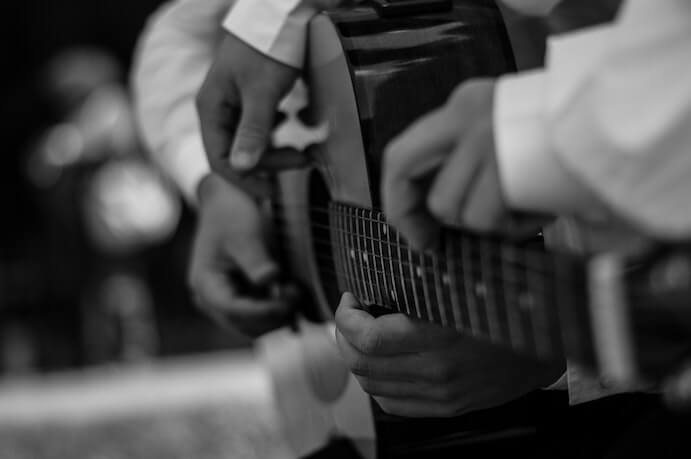“Out of Context” is a 10-part series that addresses the topic of cultural appropriation as it intersects with both Western European-based classical music and the broader social landscape. Commissioned by American Composers Forum and I CARE IF YOU LISTEN, the goal of the series is to offer information and diverse perspectives to those seeking to acknowledge historical context, honor cultural traditions that are not their own, and expand their sphere of knowledge with awareness and respect. A culminating collection of these articles and other resources will be shared for continued learning and dialogue.
Concert music today seeks out the new and unheard—be that new forms of genre-bending or traditional musics from around the globe, or the newest protege to a famous composer. These patterns of interest support and perpetuate a core belief within classical music’s collegiate pedagogy: that musical novelty can be achieved through the integration of traditional cultural elements. Marginalized composers struggling to find their voice and find opportunities within this system are regularly pressured to reduce and filter their cultural musical traditions into brands and soundbites. This belief, that novelty is key to compositional success, also serves to reward students of specific identities to draw on tenuous relationships with heritage. The seeking out of novelty and traditional sounds is encouraged in all young composers, with results being oversimplified sonic materials drawing on stereotypes and exoticism.
I still remember leaving a concert in Boston early after the prominent feature of rhythmic grunting and fake ‘indigenous’ sounds almost made me sick. Or the other time when a Chinese composer did a fake ‘meditation’ piece with two white people dramatically engaging with Tibetan traditions and sound worlds, and no one saw a problem with the fact that no one involved in the piece knew any of the original language or context. People rarely acknowledge the deep, deep problem in engaging with traditional sonic and cultural elements as if they are objects to be taken and displaced into a piece of concert music. Borrowing traditions without a personal practice perpetuates a history of cultural genocide. To engage with cultural tradition requires an understanding that can only be attained through direct community or a commitment to deep personal study.
Tradition is a verb, something you do with your body. For any person whose grandma taught them how to make an object—when she’s gone, going through the motion of making is tapping into who that grandma was. The set of musical, spiritual, and social practices stemming from cultural context produces the unique alchemy of traditional music. That specific alchemy engages extra-musical factors that young composers, trained and indoctrinated in classical music, likely don’t think about, such as connections to gods, to anger, to peace, to loss. The repetition of motion (the same actions your father and your father’s father have done) and the embodiment of it lets those actions enter you and approaches a deeper level of clarity and cultural understanding.

Photo by The New York Public Library on Unsplash
Tradition is a verb—if we make (or compose) a piece of music featuring traditional elements such as sounds, forms, and objects, it would be similar to making a piece about running. You can say the piece is about running, or conjure the feeling of running through gesture, or get a bunch of singers to run. But we would know that the piece is inherently NOT the action of running. Talking about running is not running—making a documentary about running is not running. That’s the core confusion with traditional music—when we seek it as an object or relic rather than a verb, we essentialize it to actions without repetition. They lack the conviction of repetition, of cultural relationship, and of personal transmission.
The ecosystem of contemporary classical music encourages surface-level appropriations of traditions and traditional sonic objects—the canon is rife with examples (Debussy’s Cakewalks, Dvorak stealing melodies for New World Symphony, & Stravinsky’s primitivist melodies particularly come to mind). Young composers of today are encouraged to incorporate the traditional ethnocultural sounds of their background into composed musics. The process of transduction from object/relic to score to performer interpretation and sonic enactment is defined by loss. The unique qualities of repetition and deep understanding gained through traditional practice (often social and community-focused) are subsumed by classical music’s pedagogy. A phrase may be rewritten for the sake of idiomatic playing, a particular ornament refitted to a known gesture, rhythmic complexity reduced down to regular meter.
Tradition in New Music is a strange subject. The legacy of New Complexity and the rise of entrepreneurship have spawned an unshakeable belief that with enough practice and experience, individual performers can achieve a kind of all-encompassing cross-genre virtuosity. As composers, we offer scores to be deciphered: logic to be excavated and eventually conquered. For performers, where do traditional musics fit in when the process of deciphering takes decades? The discrepancies in the core values of musical practice are left to the composers themselves.
Anna Roberts-Gevalt, a Brooklyn-based multi-disciplinary artist whose work has involved heavy archival research as well as community-focused excavation of Appalachian music, offered this anecdote:
I had a fiddler teacher named Paul. When he died, there was a way I could remember him that was so active. We could just play the music he played—I’m doing with my body what Paul did with his body, that’s how I can remember him.
The sentiment that tradition is a verb is shared by religions, cultures, geographic communities, diasporas, and martial arts, among many others. Encounters with the aesthetic and inner-workings of a specific tradition generally necessitate a personal relationship with the space and practitioners. More understanding and depth is accrued over time, with the depth of knowledge directly paralleling the commitment to the space and its community. The tradition is not in the blood, it is in participation. The tradition is in the act of transmission and an individual form of ownership that occurs over many, many repetitions. (Please note however that ownership, in this argument, is decentralized and non-hierarchical.)
Contemporary music and the practice of division between composer and performer rewards lighter, more surface-level engagements with tradition. By turning to western classical pedagogy and practice, composers can dilute and filter the most immediately decipherable elements of traditional musics into successful “new” music. Contemporary scores in particular are rife with instructions based on stereotypes: “bluesy”, “improvised fiddle tune,” “indigenous instruments.” These are in-turn interpreted by musicians indoctrinated in classical music whose interpretations often verge on the culturally insensitive to outright appropriative when classical music sets itself up to be the standard of instrumental learning and musical transmission.
Tradition, seen through these eyes, can be summed up with a new idiom or technique or workshop session. The perspective itself perpetuates a hierarchy that places a barrier of excellence between attaining a technique and the relevant cultural knowledge. For example, I was in a workshop where an Israeli composer asked an Irish clarinetist if she could “play Arabic music.” The clarinetist whipped out some harmonic scales, pitch bends, and some kind of Rhapsody in Blue-esque run. This was not, in any way, shape, or form, reflective of engagement with Maqam or traditional Arabic music. Classical music, however, would support the clarinetist, where her intention of capturing a stereotyped affect of the Middle East is seen as more successful than an actual practitioner of those traditions. The effects of these essentializations go beyond the intention of classical music and its pedagogy, actively perpetuating the damaging view of the Other and the intentional stealing of other cultures.

Photo by Nigel Tadyanehondo on Unsplash
As an ethnically-marginalized composer, I am called upon to be the cultural ambassador for traditional sounds and forms. There’s an assumption that being of a certain identity gives an inherent authority and perspective on traditional musics. Personally, I couldn’t claim that my art is in any way reflective of authentic Andean/Quechua traditional musical practices. I value and cherish my heritage and my people, our history, my ancestors, and our cosmological understandings. The verb of these traditions are my own, tied to ethnocultural and spiritual understandings that can’t be explained or revealed. The truth is that there are parts of each tradition which do get to be private and secret.
When you are a composer studying from the outside, you must realize you won’t have access to everything (in fact, even less than you think), and that mass of understandings and details you don’t have access to are the necessary keys to opening successful enactment of traditional sonic and musical elements. I personally don’t have all those keys, nor the insight of those who walk and live and sing in our old lands and ancient geographies, and so I do not yet engage. When I hear facsimiles of these understandings in concert halls, I always reflect on how much tradition is about restraint, about what we do, and, most importantly, what we don’t do. Self-reflection and self-critique that demonstrates an understanding of our subject-position isn’t encouraged enough within composed-music spaces.
So who has the right to engage with these sounds and traditions? Well…technically, everyone. When we gatekeep who is “of an identity” enough to start to engage with and reflect these sounds and practices, we do a disservice to the continuation of traditions. However, the current practitioners should ultimately decide who has the necessary understanding and capacity to engage with their traditions. In contemporary classical music, we need to highlight and push forward the necessity of traditional integration and learning, where the starting point is the transmission and practice of tradition before moving towards new and exciting ways to propagate them.
Special thanks to Anna Roberts-Gevalt





















